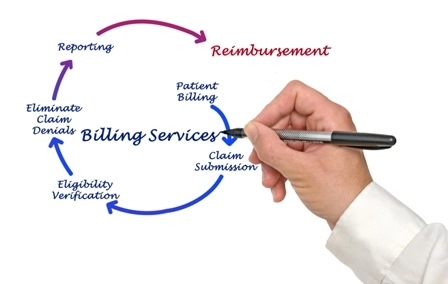EM Coding Alert
Gastroenterology: Ask These Questions, Produce Clean E/M Claims
Make sure these 3 factors don't attract a MAC's attention. Coding for time. Demonstrating medical necessity. Providing sufficient documentation. These issues affect evaluation and management (E/M) coding across all specialties, none more so than gastroenterology. So, we've put together three scenarios with a gastro focus to help coders from all areas tighten up their E/M coding. Background: According to the April 2018 Medicare Quarterly Provider Compliance Newsletter, CMS's Comprehensive Error Rate Testing (CERT) contractors are reporting that they have seen an increase in E/M claims issues due to improper coding, insufficient notes, and setting confusion. In fact, "the 2017 improper payment rate for E/M services was 12.1 percent, accounting for 10.6 percent of the overall Medicare FFS [Fee-for-Service] improper payment rate," reminds the agency in the report. As Medicare Administrative Contractors (MACs) focus their scrutiny of E/M claims more carefully, it's a good time to revisit your E/M coding practices. Check out the following three frequently-asked questions and see if you can answer them before you read our advice. 1. If Counseling/Coordination of Care Dominates the Visit, Should You Always Code Based on Time? Answer: No, not always. Sometimes it will be in your best interest to select the E/M code based on time, but in other cases, coding based on the history, exam, and medical-decision making will warrant a higher code level than basing the visit on time. This is particularly true for an established patient visit, where the level of only two of these three components determines the code. Background: CMS states that if counseling and/or coordination of care takes up more than 50 percent of the face-to-face physician/patient encounter - or floor time in the case of inpatient services - time can become the key factor in selecting the level of service. Generally, to bill an E/M code, your physician must complete at least two out of three criteria (history, exam and medical decision making) applicable to the level of service provided for an established or follow-up patient, or three of three criteria if the visit is the initial service. However, your physician may document total time spent with the patient in conjunction with the medical decision-making involved and a description of the coordination of care or counseling provided. Documentation must be in sufficient detail to support the claim, and notations of both total time and time spent counseling are required to bill an E/M as a time-based code. Consider this example: During a 15-minute visit with an established patient, your physician spends more than eight minutes discussing treatment outcomes and possible problems of hepatitis. The patient also has several other conditions including diabetes and resolved colon cancer. The gastroenterologist documents a detailed history, an expanded problem-focused exam, and medical decision-making (MDM) of moderate complexity. In this case, coding based on time would warrant 99213 (Office or other outpatient visit for the evaluation and management of an established patient, which requires at least 2 of these 3 key components: An expanded problem focused history; an expanded problem focused examination; medical decision making of low complexity...), which has a reference time of 15 minutes for this visit if the documentation is sufficient to support the medical necessity for spending the time. However, the history and MDM justify 99214 (Office or other outpatient visit for the evaluation and management of an established patient, which requires at least 2 of these 3 key components: A detailed history; a detailed examination; medical decision making of moderate complexity...), which pays about $36 more than 99213 when performed in the outpatient setting. Therefore, you'd be shorting your practice if you billed based on time in this instance. 2. The Physician Performs Mostly High-Level Visits, Some Justified, Some Possibly Not. What Can You Do? Some gastroenterologists see very sick patients with complex medical disorders, prompting them to report mostly higher-level E/M. Others, however, may mark high-level codes without justification. Even if the physician performs the right elements of history and exam with every patient to justify all 99214 and 99215 codes, that doesn't mean that medical necessity exists to perform those elements. Medical necessity is the key to successful coding and reimbursement, and you can't support your code choice without it. In the Social Security Act (Title XVIII of the Social Security Act, Section 1862 [a] [1] [a]) Medicare says, "No payment may be made under Part A or Part B for expenses incurred for items or services which are not reasonable and necessary for the diagnosis or treatment of illness or injury or to improve the functioning of a malformed body member." If your physician appears to be ticking off exam and history elements that insurers won't deem medically necessary, sit down with the doctor and have a chat about insurance rules. For instance, if a patient presents for GERD and the doctor performs a complete integumentary and ophthalmological exam, you may want to ask if those were medically necessary for that diagnosis. If not, explain to the physician that it's the medical necessity that should drive the code choice rather than the E/M bullets alone. 3. We've Had Multiple Insufficient Documentation Denials. What Can We Look for to Combat This? Although the documentation may look thorough, if you look deeper, you can often find things like unsigned forms, lack of detail, and missing treatment orders - and all of these things can prompt denials. Take a good look at the providers' documentation to see if there's room for future improvement. Tips: There are things you can do to help lower the percentage of payment errors blamed on insufficient documentation. The following examples can help guide you as you look for these issues: Example: An established patient comes to your office for a colonoscopy. Your gastroenterologist sees the patient prior to the scope and performs an unrelated E/M service because the patient says he has acid reflux. The physician says he examined the patient and prescribed an antacid; however, the history, exam, and MDM only relate to the colonoscopy. The doctor's notes don't mention the reflux condition or prescription. Therefore, you can only report the scope. Because there are no notes to support the unrelated symptoms needing a problem-oriented encounter, you cannot separately report an E/M service for the reflux evaluation and treatment.
Related Articles
EM Coding Alert
- Auditing:
Avoid Audit Agony with This Modifier Advice
RAC review sheds light on improper claims reported during global periods. Think you know how [...] - Specialty Spotlight:
Gastroenterology: Ask These Questions, Produce Clean E/M Claims
Make sure these 3 factors don't attract a MAC's attention. Coding for time. Demonstrating medical [...] - Mythbusters:
Take Time to Bust These 4 Prolonged Service Myths
Our experts help you sort fact from fiction surrounding these E/M add-ons. When complex patient [...] - You Be the Coder:
Think Threshold to Understand Typical Time
Question: As a new coder, I am still a little confused by the times listed [...] - Reader Question:
Pinpoint Place of Service in This ED E/M Scenario
Question: We saw a patient in the ED for a possible broken bone following a [...] - Reader Question:
Know Your History for Successful E/M Chart Coding
Question: When coding an E/M chart, how do we know where the "current" conditions/symptoms and [...]




